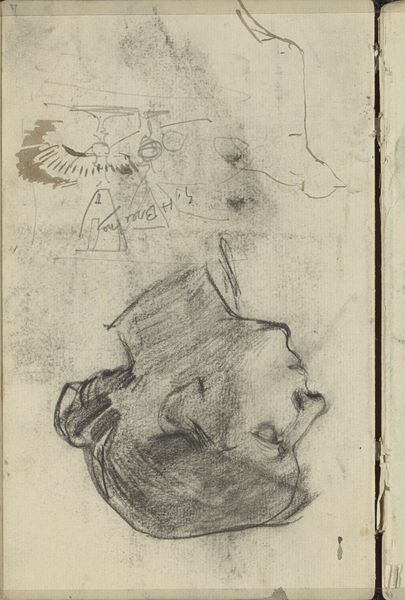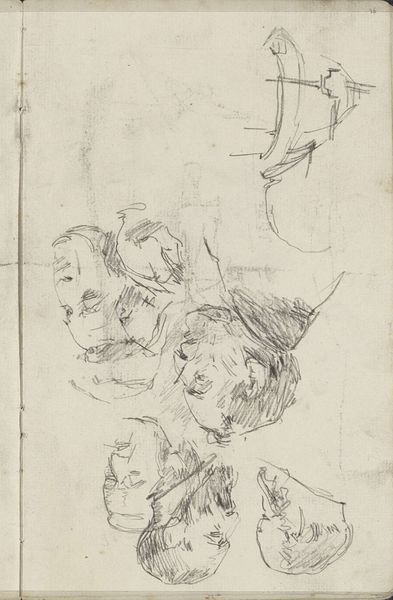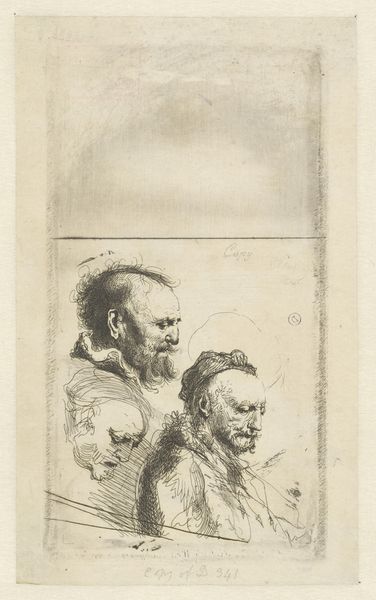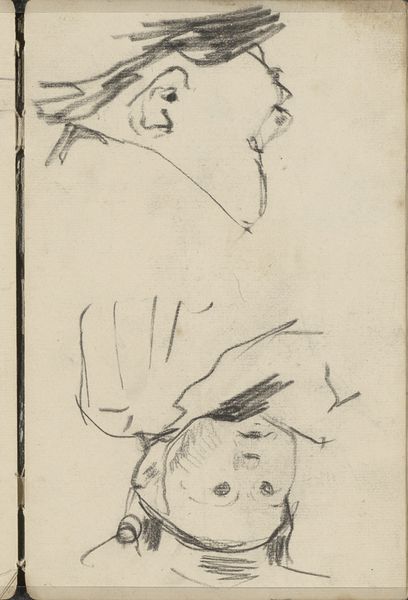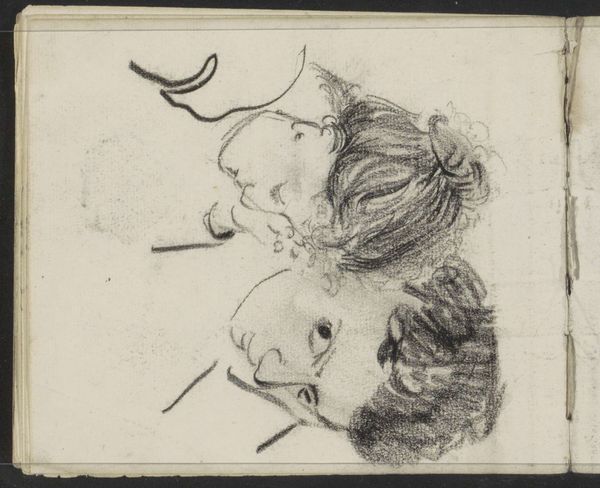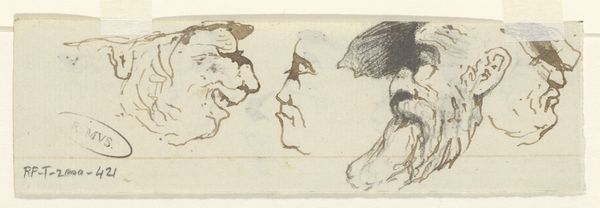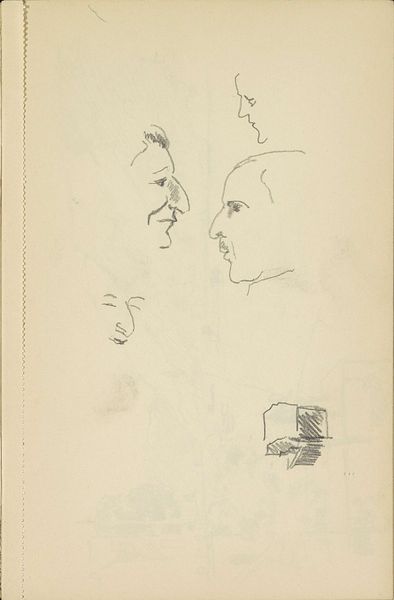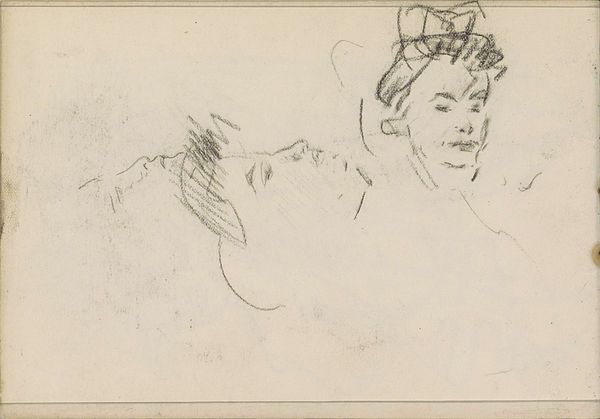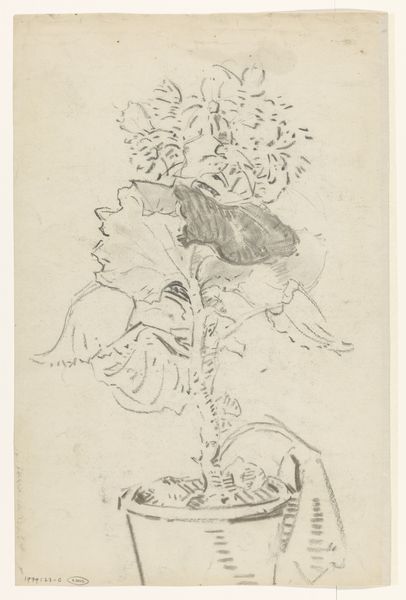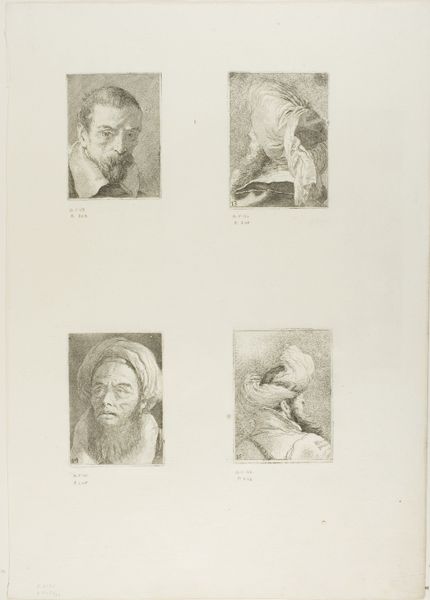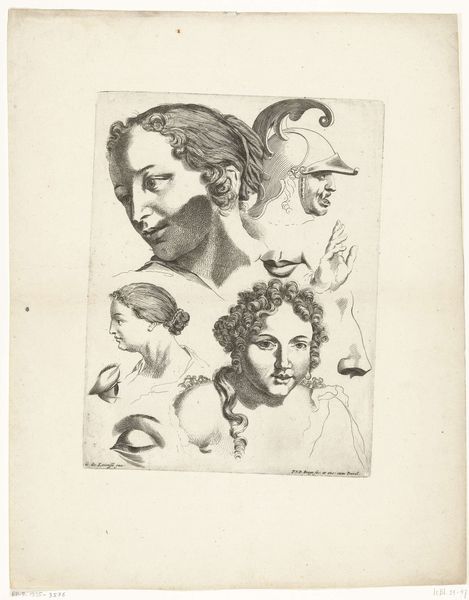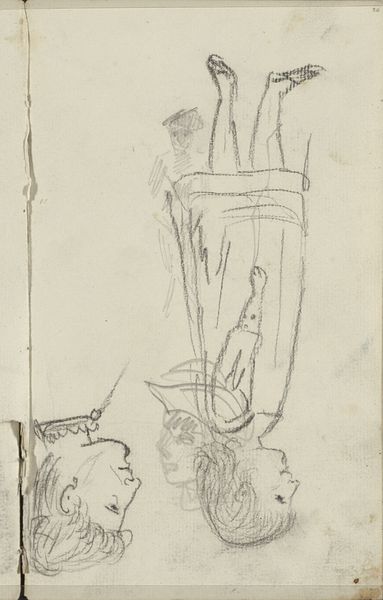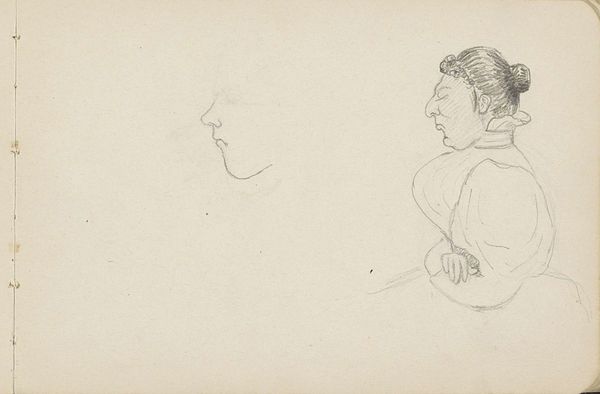
Schetsblad met man met bontmuts en man met steek die een derde man wurgt c. 1750 - 1800
0:00
0:00
Dimensions: height 180 mm, width 95 mm
Copyright: Rijks Museum: Open Domain
Curator: Before us, we have "Schetsblad met man met bontmuts en man met steek die een derde man wurgt" - or, "Sketch Sheet with Man in Fur Hat and Man in a Tricorne Strangling a Third Man." It's a pen and ink drawing on paper by G. van Citters, dating roughly from 1750 to 1800. Editor: It strikes me immediately as intensely unsettling. The rough, almost frantic lines, the compressed composition – it feels like peering into someone's dark imaginings. Curator: Indeed. Let's unpack that a little. Note the stark contrast in textures – the meticulously rendered fur hat, a mass of dense, parallel strokes, set against the more freely sketched faces and the brutal action unfolding below. It's a deliberate aesthetic choice, underscoring, perhaps, status versus raw emotion. Editor: The very means of production are vital here. Pen and ink allows for this spontaneity, this rawness. We aren’t looking at a polished painting destined for a salon; this feels immediate, like witnessing the very act of its creation, a sketch dashed off, perhaps in private, exploring forbidden themes of violence. Curator: And the spatial arrangement! The floating head above, almost detached, perhaps representing a figure of authority or judgment, observes the visceral act of violence beneath. This positioning invites the viewer to question power dynamics. Editor: I wonder about the material circumstances under which Van Citters was working. Was paper readily available, or a precious commodity? Was this a commercial venture or a private exercise? The relatively simple medium also brings into relief class and accessibility to artistic tools at that moment. Curator: These are acute observations, bringing to the fore crucial socio-economic perspectives. From a formal point, consider also the use of line. Short, broken lines describe the grimace of the victim, contrasting with the longer, more confident strokes outlining the perpetrator's hat. The lines are charged with emotion. Editor: It returns me to this sensation. The labor that has made up the scene suggests to me not just an illustration but perhaps a comment upon an injustice. As an observer, what is the true cost of each pen stroke across the image? The weight and labor is held not in line or form but each application of material to image. Curator: Precisely, and examining those choices deepens our reading, shifting from mere representation to social commentary. Editor: This is an aesthetic investigation into what truly moves and binds us as makers and observers of violent scenes.
Comments
No comments
Be the first to comment and join the conversation on the ultimate creative platform.
